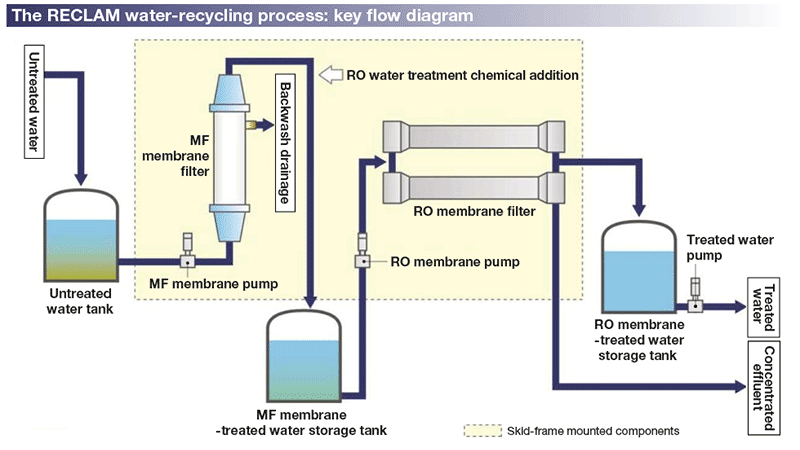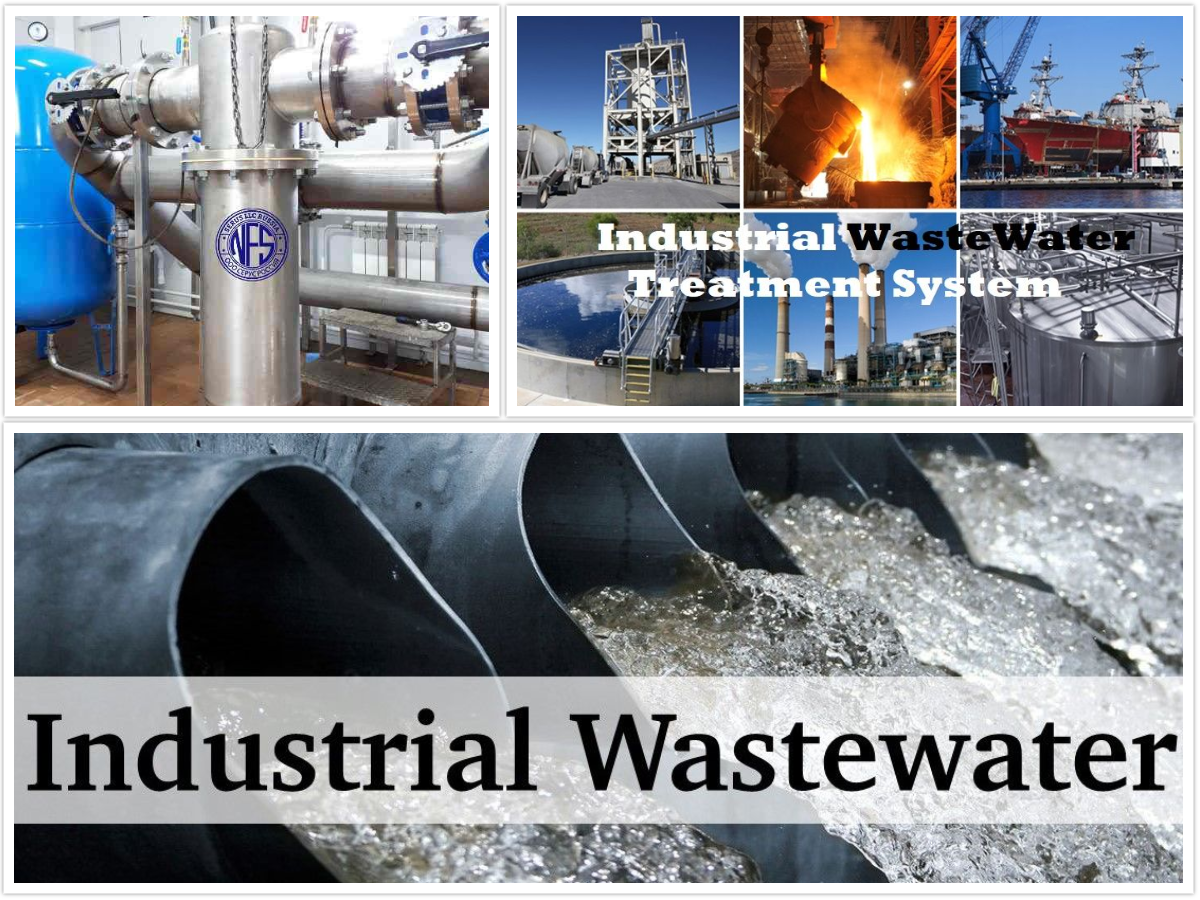Industrial Waste Water Treatment-- Customized Solutions for Effective Wastewater Treatment
Secret Strategies in Hazardous Waste Water Treatment Processes
The therapy of industrial wastewater is an important element of ecological monitoring, including a series of techniques made to alleviate the impact of impurities. From the fundamental physical approaches that separate solids to the innovative chemical and biological procedures that target particular pollutants, each method plays an important duty in achieving water high quality standards. Furthermore, improvements in modern technologies such as membrane purification and progressed oxidation procedures offer innovative options for improving therapy effectiveness. Comprehending exactly how these approaches interconnect and their implications for sustainability increases vital questions regarding the future of wastewater administration in sector.
Physical Treatment Methods
How successfully can physical therapy techniques attend to the intricacies of commercial wastewater? Physical therapy techniques play a critical function in the preliminary stages of wastewater management, focusing largely on the elimination of solids and big particulates. Methods such as sedimentation, flotation, and filtering are essential for reducing the focus of put on hold solids, consequently enhancing the efficiency of succeeding therapy processes.
Sedimentation involves the gravitational settling of solids, permitting for the separation of larger materials from the wastewater. This approach is especially reliable in clearing up water prior to organic or chemical therapies.
Furthermore, flotation protection techniques, which make use of air bubbles to lift put on hold solids to the surface area for elimination, work in dealing with wastewater with high concentrations of fats, oils, and oils. Generally, physical treatment techniques function as an essential first action in the comprehensive administration of commercial wastewater, guaranteeing that the lots on succeeding therapy stages is lessened and enhancing total therapy efficacy.
Chemical Therapy Strategies
While physical treatment approaches prepared for effective wastewater monitoring, chemical treatment techniques are crucial for attending to the much more intricate pollutants often located in industrial effluents. These approaches utilize numerous chemical agents to speed up, neutralize, or oxidize unsafe compounds, making certain a much more thorough removal of pollutants.
One typical strategy is coagulation and flocculation, where chemical coagulants such as aluminum sulfate or ferric chloride are included to promote the gathering of suspended fragments. This process improves solid-liquid splitting up, reducing turbidity and enhancing water top quality. Furthermore, neutralization procedures are utilized to readjust the pH of wastewater, using acids or bases to counteract acidic or alkaline streams, respectively.
Oxidation-reduction reactions play a critical role in degrading natural impurities and pathogens. Chemical oxidants like ozone, chlorine, or hydrogen peroxide are made use of to damage down complex organic substances, making them much less harmful or much more naturally degradable. In addition, advanced oxidation processes (AOPs) combine several oxidation methods to improve toxin elimination performance.
Organic Therapy Processes
The effectiveness of wastewater treatment is significantly improved by biological treatment processes, which harness the natural metabolic activities of microorganisms to break down raw material and eliminate pollutants. Industrial Waste Water Treatment. These processes primarily involve cardio and anaerobic food digestion, each customized for certain kinds of wastewater
Cardiovascular treatment processes make use of oxygen to sustain microbial growth, promoting the breakdown of organic pollutants right into carbon dioxide and water. Typical techniques include turned on sludge systems, where oygenation containers promote the mixing of wastewater with microorganisms, and flowing filters, which urge biofilm advancement on media surfaces.
On the other hand, anaerobic treatment processes occur in the lack of oxygen, making use of anaerobic germs to break down raw material, resulting in biogas manufacturing, an eco-friendly power source. Anaerobic digesters are frequently utilized in commercial settings for this objective, successfully minimizing the volume of sludge while creating important biogas.
The option of a biological therapy technique depends on wastewater attributes, treatment objectives, and regulatory requirements. The integration of biological procedures in wastewater therapy not only improves pollutant removal performance yet also promotes sustainability by minimizing chemical use and sustaining resource recuperation.
Advanced Oxidation Processes

Typical AOP techniques consist of Fenton's reagent, photocatalysis, and ozonation. Fenton's reagent, a mix of hydrogen peroxide and ferrous iron, catalyzes the development of hydroxyl radicals, making it efficient for treating wastewater consisting of phenolic compounds and various other recalcitrant compounds. Ozonation utilizes ozone as a powerful oxidant, with the ability of deteriorating a large range of natural pollutants while concurrently disinfecting the effluent. Photocatalysis utilizes light-activated stimulants, such as titanium dioxide, to enhance oxidation responses and eliminate pollutants. see post
AOPs offer a number of benefits, consisting of reduced sludge production and the capability to deal with wastewater with high focus of natural pollutants. The implementation of AOPs needs cautious consideration of operational specifications and cost-effectiveness, making sure that these innovative strategies are suitably incorporated right into existing wastewater therapy systems.
Membrane Layer Filtering Technologies

Microfiltration is reliable for removing suspended solids and germs, while ultrafiltration targets smaller sized natural particles and viruses. Nanofiltration bridges the space between ultrafiltration and reverse osmosis, successfully official source getting rid of divalent ions and organic compounds. Reverse osmosis provides the highest degree of filtration, used largely for desalination and removing mono-valent ions.
Membrane technologies provide many benefits, including low energy usage compared to conventional treatment techniques, modular style for scalability, and the capacity for water healing and reuse. Nevertheless, difficulties such as membrane fouling and the need for regular maintenance must be addressed to guarantee system effectiveness. Overall, membrane layer purification innovations represent a vital part of modern industrial wastewater treatment approaches, advertising sustainability and resource conservation in water monitoring.
Final Thought
In final thought, industrial wastewater treatment uses a varied selection of techniques, consisting of physical, chemical, organic, and advanced techniques. Proceeded developments in these techniques will even more boost the efficiency and efficiency of wastewater therapy procedures in industrial settings.
The treatment of commercial wastewater is a vital facet of ecological management, including a variety of strategies designed to reduce the effect of pollutants.Just how effectively can physical treatment techniques attend to the intricacies of commercial wastewater?Advanced oxidation procedures (AOPs) stand for a cutting-edge method in industrial wastewater treatment, created to properly degrade organic pollutants that are frequently resistant to conventional treatment methods (Industrial Waste Water Treatment).In verdict, commercial wastewater therapy uses a varied selection of strategies, consisting of physical, chemical, organic, and progressed approaches. Proceeded innovations in these techniques will certainly better boost the performance and performance of wastewater therapy procedures in industrial settings